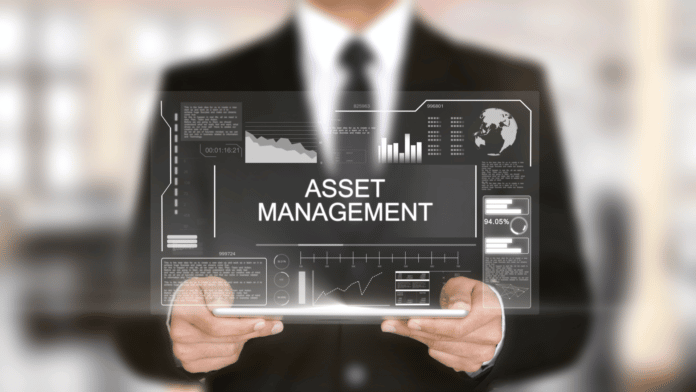According to the business world, you must use the accounting program as your company’s financial process. Accounting is a business’s primary role, including asset and liability activities. These assets and liabilities are the origins of the company’s capital came from. It includes all company assets, such as cash flow, accounts receivable, and your company building. Using an Asset Management System, which can calculate assets automatically, is one of the most effective ways to manage these assets.
To conveniently operate a business, all of your assets must be based on a system, such as ERP software, accounting software, inventory software, Asset Software, and many more. This software or system is as essential as the function of your company’s assets in carrying out the company’s operational processes, especially as technology advances and demands you to use the most up-to-date technology. HashMicro is your ultimate solution as a software provider with exclusive features.
Table of Content:
Table of Content
Definition of Assets in General
Assets consist of all the company’s properties that companies can measure in monetary units, such as cash, goods, and buildings. This asset is a result of transactions you have completed in the past. Hence its value will fluctuate. Usually, during the beginning of a business, the assets serve as the first capital. In practice, assets are equivalent to cash, but in reality, all company transactions constitute assets. You can manage this using the Asset Management System so that it does not exceed its budget or become ineffective.
Based on their liquidity, assets are classified into two categories: current and noncurrent assets. Liquidity is the capacity of an asset to be utilized within a specified time frame. When an asset quickly converts into a specific currency, there is high liquidity. In addition, if the asset is converted into cash over around one year, the liquidity is low. Liquidity can be monitored using an Asset Management System that can analyze data accurately.
Also read: High-Tech Solution to Track Your Assets
Current Assets
Current assets are assets that can be quickly converted into cash. This type of asset is quantifiable in terms of monetary units. Usually, current assets are essential to operating a business’s procedures. Due to the simplicity of the approach, current assets are utilized to cover operational expenses. Based on financially and accounting-wise, the following types of current assets include:
Cash
In conducting operational financing, companies usually use cash. The cash disbursement process is relatively fast, unlike money stored in a bank checking account, for which you must wait until a specified date. Using the Asset Management System, you may avoid unnecessary cash usage.
Securities
Securities are assets issued by a company in the form of letters that represent ownership of valuable assets. These securities are tradeable, the types of securities are monthly deposits, bonds, stocks, notes receivable, and other securities that you can trade. Using the Asset Management System, you may identify who has these securities.
Account receivable
Assets that are not cashing in the form of cash are known as account receivables. The assets originate from parties who owe you money. These account receivables can be converted into cash if the debtor pays back the money. Using the Asset Management System, you can record the ownership of these account receivables so that the debtors cannot deny it at the time of collection.
Merchandise inventory
Merchandise inventory is wealth in the form of purchased and resold items. When the goods are sold, they will generate a profit for the company. In other words, the sold goods will be converted into cash. Having been integrated with the company’s inventory system, the Asset Management System can determine which items have been sold.
Prepaid expenses
Prepaid expenses are business assets that are typically paid upfront. Generally, this refers to the leasing of buildings and other rentals that are commonly relatively long-term. At the end of the period, your incurred costs will be converted into depreciation. An accurate Asset Management System can collect information on these costs.
Non-current Assets
Noncurrent assets are assets that cannot be quickly converted to cash. Usually, these assets are disbursed slowly. Hence, it is extremely challenging to convert noncurrent assets into cash. Noncurrent assets are separated into three categories, such as:
Fixed assets
Fixed assets are assets that a company acquires to serve as capital for its operational processes. Usually, this asset is tangible, and its value will fluctuate over time if measured in units of currency value. The fixed assets include buildings, company vehicles, equipment, land, etc. The Asset Management System also tracks the ownership of these assets.
Intangible assets
Intangible assets are those whose advantages are felt but which are physically undetectable. These assets are frequently referred to by companies that own them as privileges so that your business can gain financial rewards. These intangible assets are examples of these intangible assets: copyrights, patents, trademark rights, contract rights, franchises, and goodwill. You can manage all of these assets using an accurate Asset Management System.
Longterm investment
To boost the company’s profitability in the future, this investment may be made in the form of fixed or non-fixed assets involved in its financial activities. A few examples are buying government bonds, bonds, or stock in other corporations. Although previously bonds and stocks have been represented as current assets in the form of securities, some stocks and bonds are essentially long-term investments made by companies. You can manage your company’s investments through an Asset Management System.
Also read: Top 7 Asset Management Software Features
The Difference between Current Assets with Non-Current Assets
Depending on the difference, you can classify this asset using the Asset Management System to determine if it is a current asset or not. First, current assets can be converted into cash in less than a year, while non-current assets require more than a year to complete the disbursement procedure.
Second, if you purchase current assets, the reason for buying the set is to save money for investments, cash flow, and business operational expenses. In the interim, you purchase non-current assets to aid in production. Thirdly, there are benefits to buying assets: current assets represent direct payment instruments in business operations, while non-current assets represent corporate guarantees for bank loans.
Benefits of Asset Management System for Calculating Your Current Assets
Using an Asset Management System has various benefits that can raise the caliber and productivity of the business. The current assets of your firm can be easily identified because they contain a lot of specific information, such as the value, documents, and the name of the person in charge.
You can easily keep track of them using the serial number and barcode. The next benefit is the ability to evaluate the value of your current assets using ROI and to have all associated expenditures calculated automatically. When deciding whether companies should still use an asset or whether the company should sell it, the Asset Management System can analyze the cost of the asset.
Conclusion
Current assets can quickly turn over from your business assets into cash. Because the method is simple to cash out, current assets are used to pay for operating expenses. Cash, marketable securities, accounts receivable, inventory of goods, and pre-paid expenses are all examples of current assets. The distribution procedure takes less than a year, making it simple for the Asset Management System to manage. If your company uses the most comprehensive asset management system in Indonesia, you can gain a lot of benefits.
You cannot separate the advantages you get from the benefits of HashMicro’s Asset Management Software. Because this system is currently cloud-based, you can control asset activity with quick access, which is one of its features. HashMicro is the ideal solution for you as a media provider for all firm operational activities in Indonesia that demand a system with the most comprehensive capabilities.
HashMicro provides your firm with a free demo if you wish to get the whole technology that HashMicro has developed. By downloading the HashMicro software pricing scheme calculations, you can start using the system completely.







































